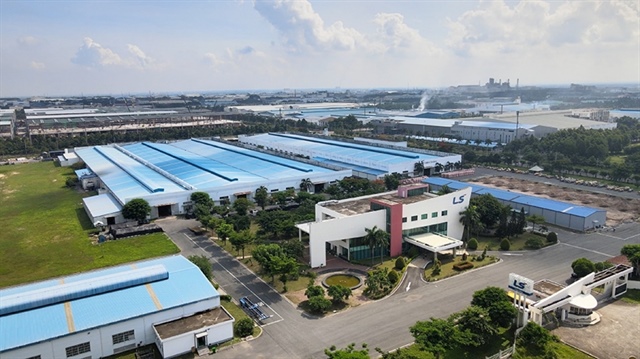VN industrial production lagging
VN industrial production lagging
The national index of industrial production (IIP) surged by 2.4 per cent year-on-year in the first two months of this year, much lower than the 6.8 per cent growth seen in same period last year, according to General Statistics Office data.

The processing and manufacturing sector, which accounts for over 70 per cent of total industrial production in the country, saw a lagging IIP rise of 6.6 per cent, compared to 8.1 per cent in 2016.
Two other IIP sectors--electricity production and distribution and waste treatment — also lagged behind last year’s corresponding period with 9.3 per cent and 6.6 per cent, respectively.
Meanwhile, the mining industry experienced a significant decline of 13.5 per cent in two months.
GSO statisticians blamed the sluggish IIP growth in the reviewed period for the week-long break during the Tet holiday and a slowdown in local consumption power, which forced enterprises to curb their production capacities.
Several key industrial products that posted IIP reduction included crude oil (down 15.6 per cent), mobile phones (8.9 per cent), sugar (10.2 per cent) and cloth (1 per cent).
On a positive note, IIP increased significantly for other major products such as rolled steel (up 35.4 per cent), television sets (16.7 per cent), seasoning powder (12.8 per cent) and fresh milk (11.4 per cent).
Among the provinces and cities that saw significant industrial production growth were northern port city of Hai Phong at 17.2 per cent; northern Thai Nguyen province at 10 per cent; central city of Da Nang at 9.6 per cent; southern provinces of Binh Duong and Dong Nai at 5.9 per cent, Ha Noi at 5.8 per cent and HCM City at 5.1 per cent.
According to GSO, the inventory index of the manufacturing and processing industry rose by 13.3 per cent, 4 per cent higher than that of same period last year, with several industries reporting high inventories such as chemical and chemical products (116.7 per cent), metal moulding (111.7 per cent), pharmaceuticals (110 per cent) and food processing (85 per cent).





















